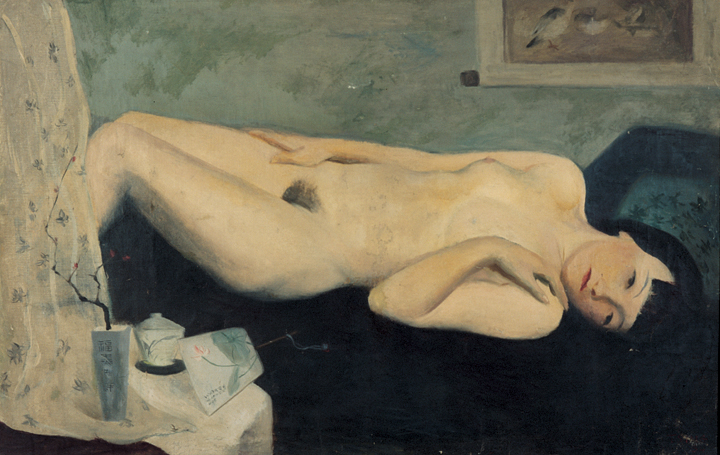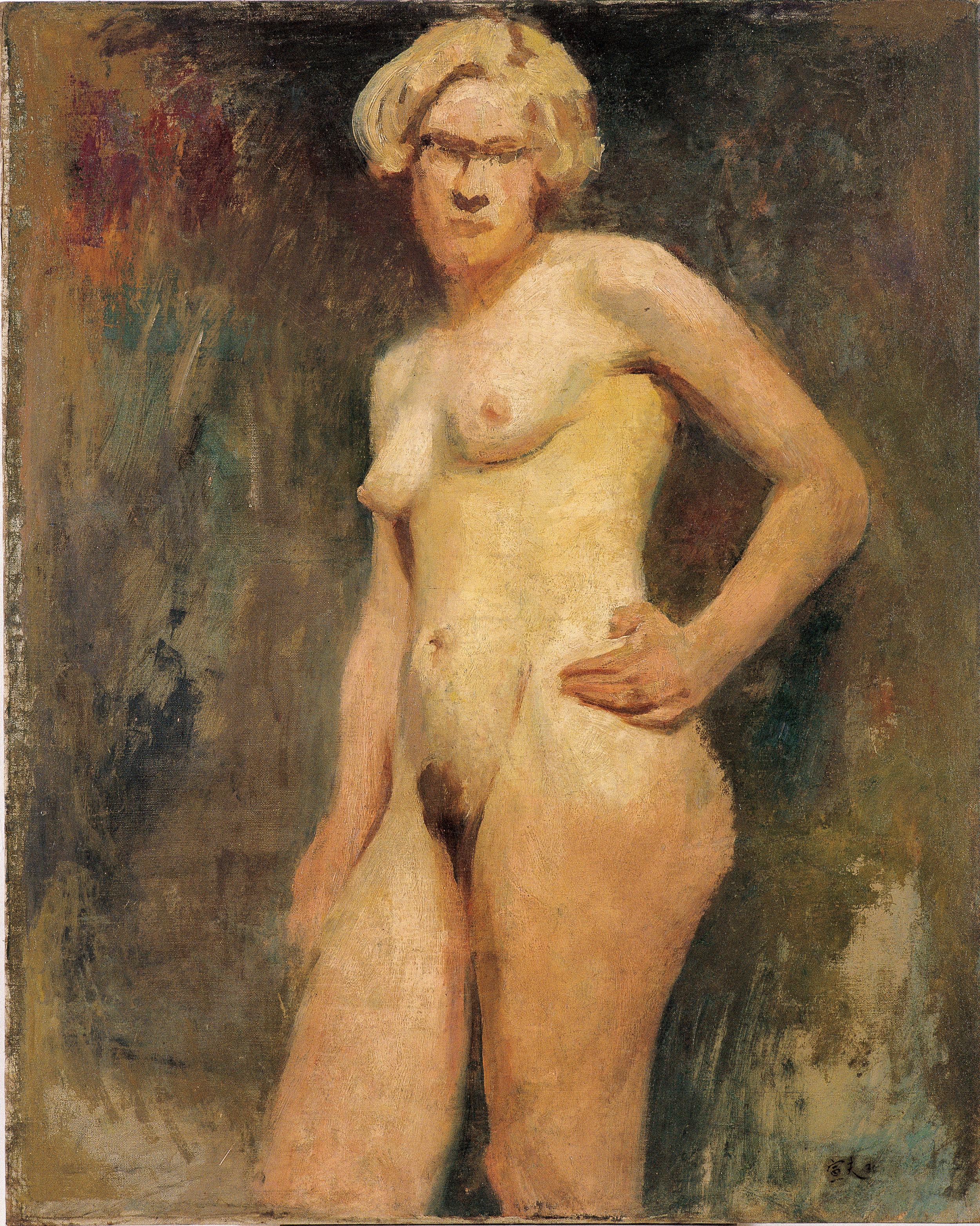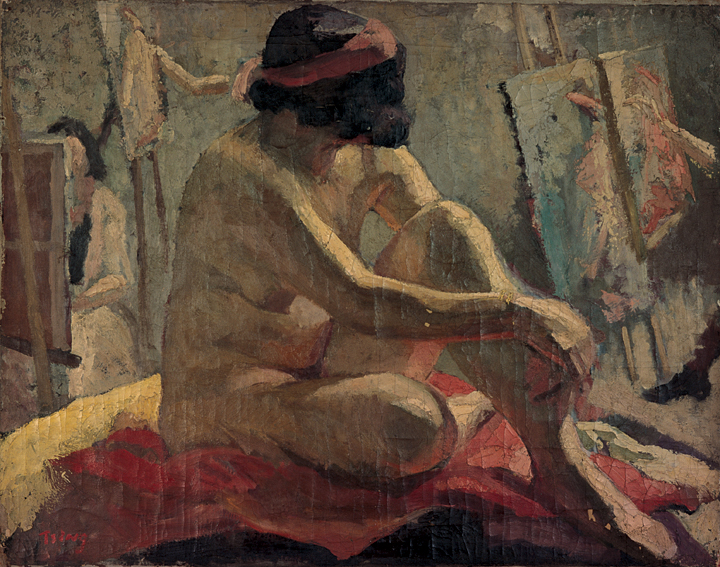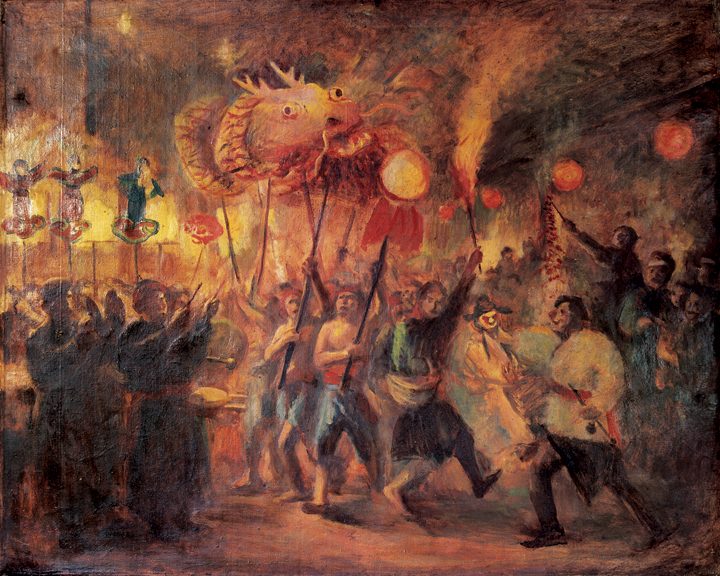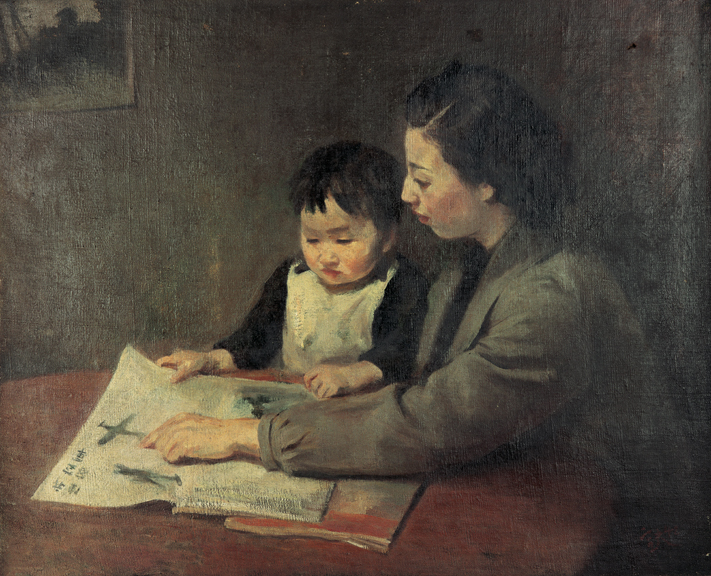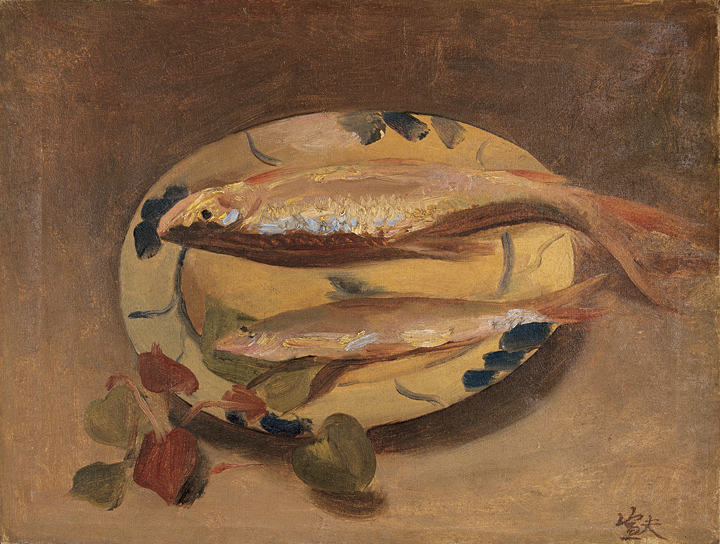The First Period 1930~1949
Mr. Qin graduated from Qin Hua University with a BA degree. In 1930, he went to Paris, France, the most flourishing center for western fine arts. Where for five years, he pursued his study of oil painting. He was admitted by the French National School of Fine Arts and was lucky to study and work at the Dean, Mr. Luiren Simon’s studio for four years, He was also an honored France Fine Arts Academician. There Mr. Qin gained a solid foundation about western culture, the oil painting essentials and integrated them from both eastern and western cultures.
But Mr. Qin had a broader vision and a more ambitious goal. When he was in Paris, he not only learned painting skills, but he studied western art history. He was admitted by the Louvre School within the Louvre Museum, as well as by the Archaeology Institute at Paris University. During vacations, he visited several cities including London, Madrid, Toledo in Spain, Milan, Rome, Venice, Munich, Berlin, and cities in Poland and Russian to see with his own eyes original paintings by western artistic masters especially those by the Impressionist giants. This solid foundation in western art history for him, broadened his view points, and enriched his painting skills. Such a combination of skills was rarely found among artists at that time. Mr. Qin was one of the very few artists good at both art theory and practice.
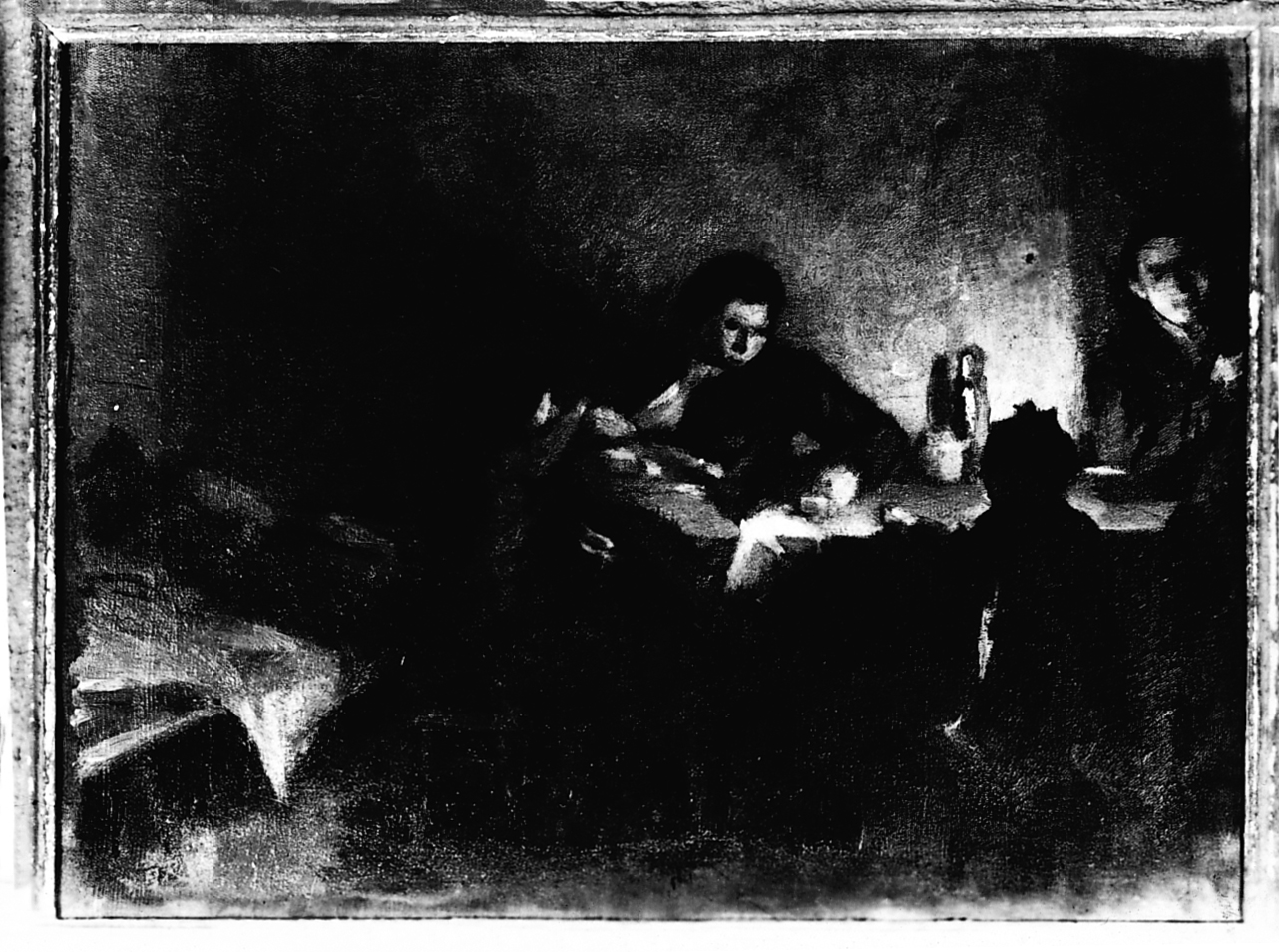
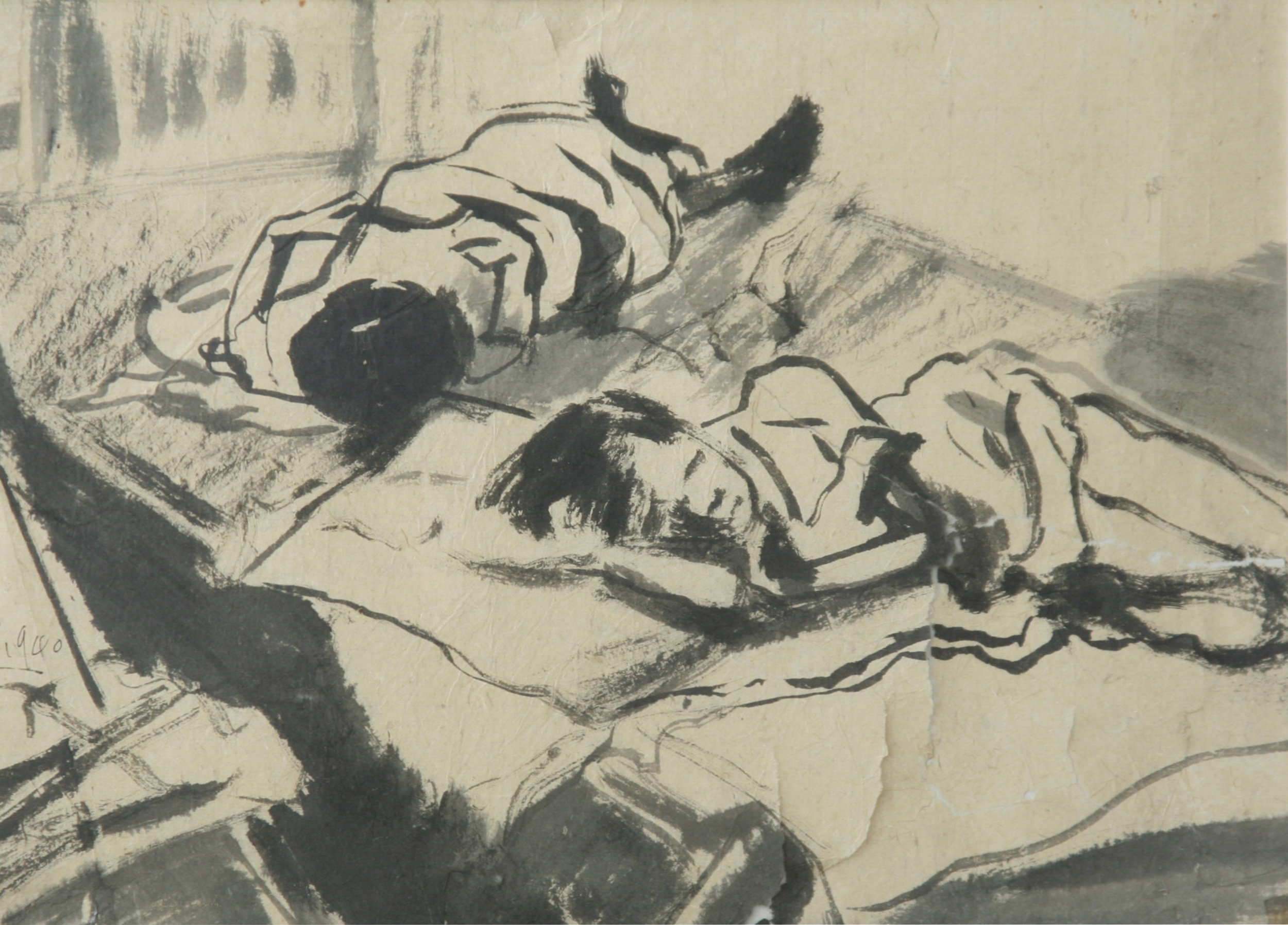
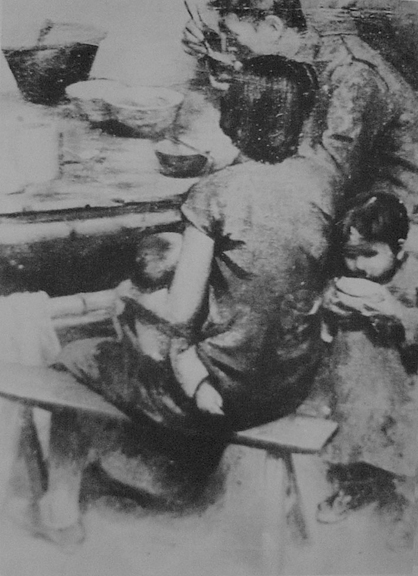
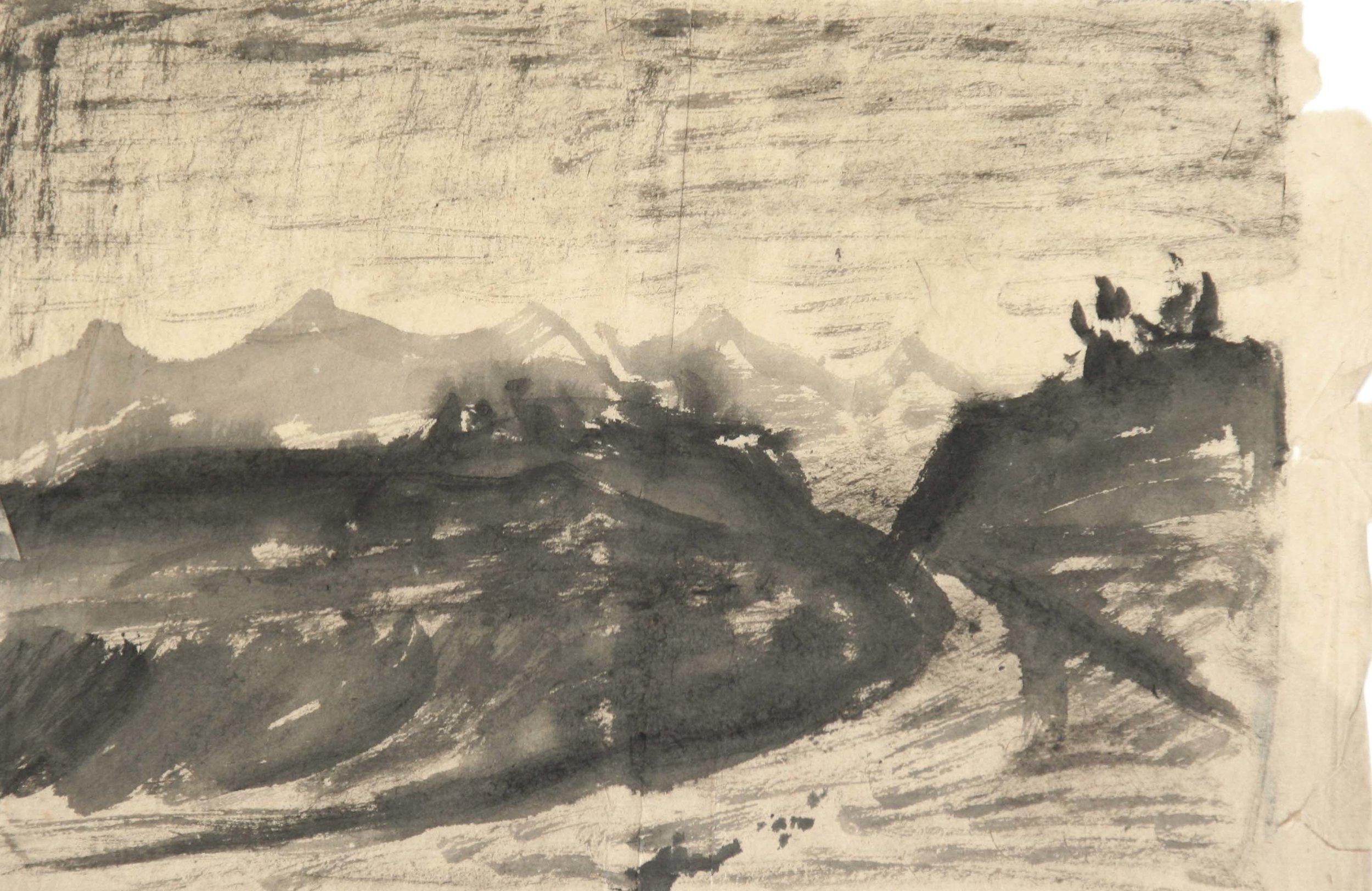
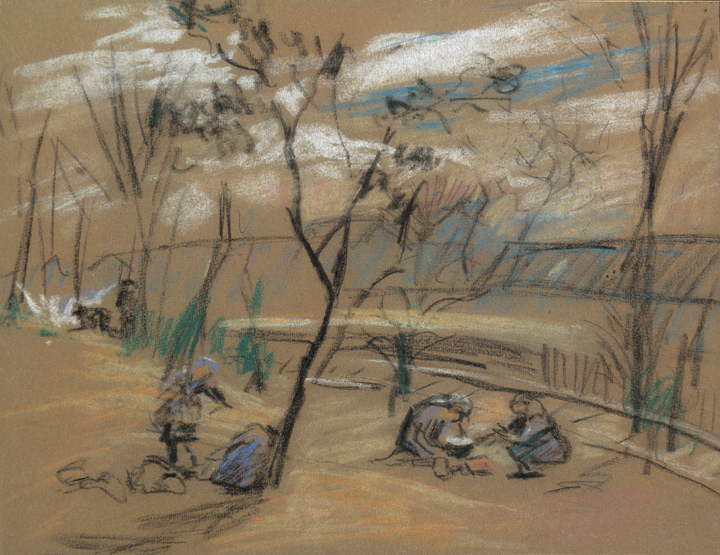
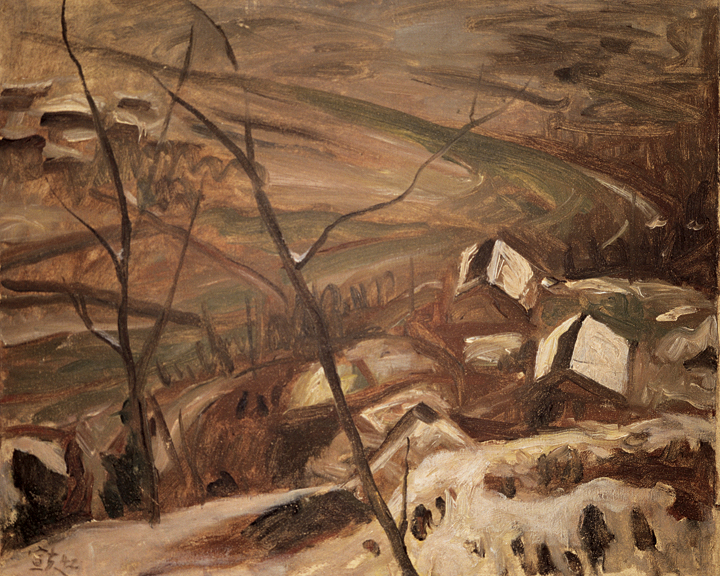
The Anti Japanese War started
After the Anti Japanese War started, the Beiping National School of Fine Arts merged with HangZhou National School of Fine Arts and moved out of Beijing. Xuanfu traveled with the school from the northern part of China to the south and arrived in Chongqin, a city in southwest of China. During the war, Xuanfu worked for several schools and organizations in various positions, including as a specialist board member of the National Art Education Committee under the Ministry of Education, a board member of the Chinese Fine Arts Association, professor and dean of the Western Arts Department of the National School of Fine Arts , professor of the Fine Arts Department in Central University, and board member of the Chinese National Writer Association.
Under the Invasion of the Japanese army, the Chinese people lived a miserable life. Mr. Qin fought with his brushes and painted a group of paintings reflecting Japanese’ crimes such as “The Torture” and “Food as the Foundation of Life”, “Poor Family”, and “Refugees”.
During this period, Mr. Qin painted portraits for many people.
Here are comments on Mr. Qin’s portraits from Lu Sibai. “Colors Xuanfu used to portray people, especially women, are rich and beautiful. One example is “Portrait of the Wife”, which depicts an elegant, dignified lady. Looking closely, one can see her smooth and tender skin. As for her hands, it is extremely subtle. I dare say that he has already truly grasped Renoir’s techniques.” As for Xuanfu portraits, Xu Beihong, the master of fine arts in China, commented “all his portraits convey well his subjects’ spirit.”
(“Girl in Red”, “Portrait of Jiang Biwei”, “Portrait of the Wife”, “Portrait of Wang Henei”, “The girl with a dole”, “Girl and Chrysanthemum”, and “Under the Light”, The Oil painting “Portrait of Wu Zuoren”, Etc..
Oil painting “the portrait of Wu Zuoren”, “Portrait of Wang Linyi”, “Young Child”
Mr. Qin’s paintings “Country Girl from Yunnan”, “Go to the Fair” and “Back Home” were selected for the collective exhibition by Wu Zuoren, Tan Yihe, Lu Xiaguang, Huang Xianzhi, Lu Sibai, Qin Xuanfu, Li Ruinian, and Wang Linyi eight artists in Chengdu, 1942.
(Photo of Painting “Yun Nan Villege Girl”, the oil painting “CiQiKou (A place where the school located”)
As for Mr. Qin Xuanfu’s landscape and still life paintings, Mr. Lu Sibai commented: “I believe Xuanfu’s success in landscape painting is not beautiful morning clouds and sunset sceneries, nor the poetic element expressed in wind, rain, dark and light, but his feelings about nature. One example is his small landscape painting, “Rain Approaching the Mountains”. It was based on the scenery of one corner of a castle at Fenghuang Mountain. There is the curving river with snows in the distance, and thick mists and heavy clouds approaching from the river, pushing everything behind. This is, indeed, poetic and impressive, but what is more, this is also a jade, a masterpiece. An artists easily gets involved in the scenery of the Fenghuang Mountain with spring wildflowers blooming all over the mountain and with the river flowing with the winter’s clear and emerald water through the sandy beach. At dusk, one can really feel the magnificence of the sunset. Xuanfu enjoys all this, since he puts such feelings into his paintings as in “Mountain Flowers” (Shanhua), “Thin Dusk” (Baomu), and “A Farmer’s House” .
After the National exhibition, Mr. Xu Beihong collected the “JiaLing River”, one of Mr. Qin’s landscape paintings. This showed Mr. Xu’s appreciation of Mr. Qin’s painting skills and techniques.
(Oil painting “Terrace in Chongqin”; Oil painting “Rain Approaching the Mountains”. Oil painting “CiQikou Scenery” , “Little house in Fenhuang Mountain”, “Mountain Flowers”, “Back home”, and “A Farmer’s House”)
Water color paintings “Fog in Chongqin” and “Scenery in Mount FengHuang” presented the hazy fog in Chonqi in a way that the moisture and the smell of the mountain fog can almost be felt. Buried in the fog are different levels of mountain objects painted by free, daring stokes. The paintings are poetic.
(《重庆雾》、《凤凰山风景》、素描《凤凰山风景》)
(The water color ”Fog in Chongqin”, the oil painting ““Scenery in Mount FengHuang” and the sketch “Scenery in Mount FengHuang”)
The still life painting “Fish” delicately depicted a fish with lively strokes, especially the quality and the color on the scale that makes the fish almost alive.
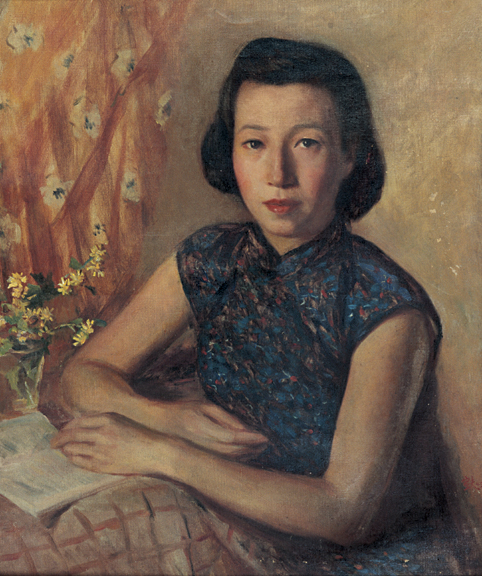
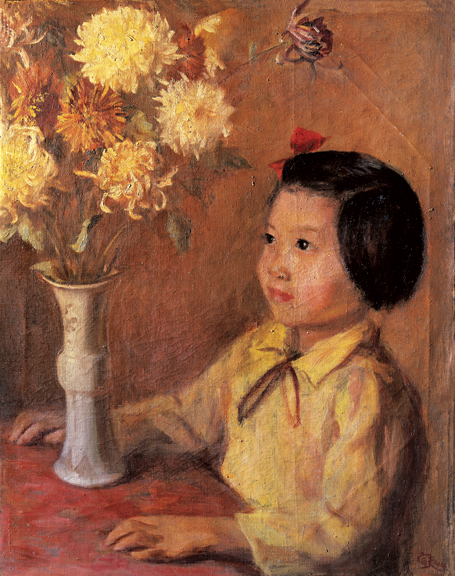
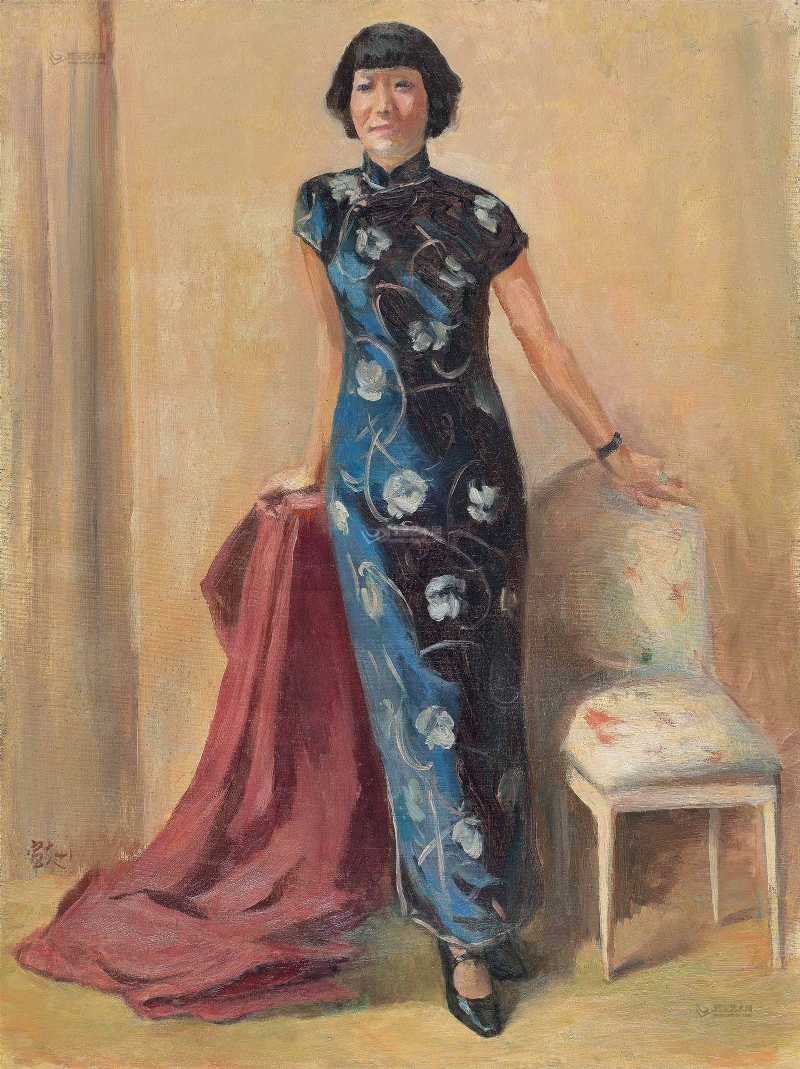
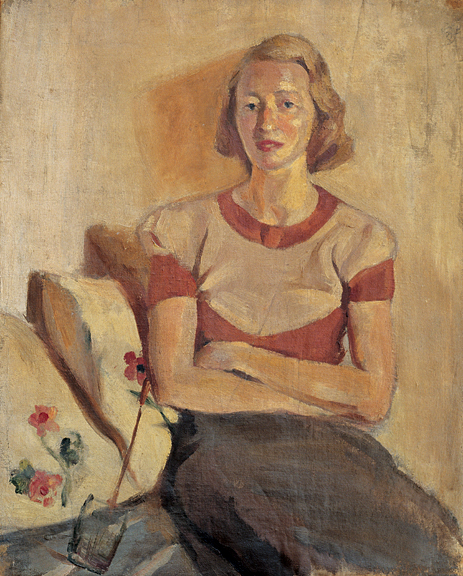
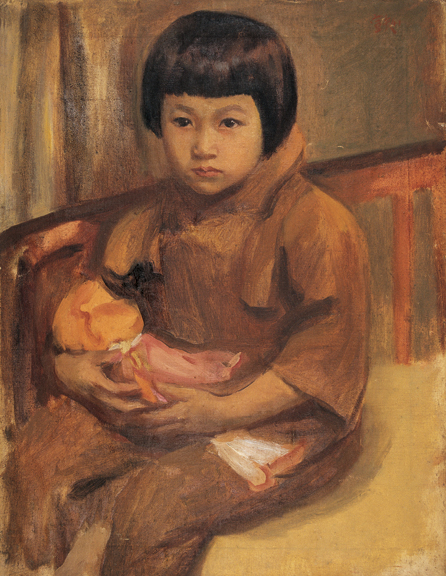
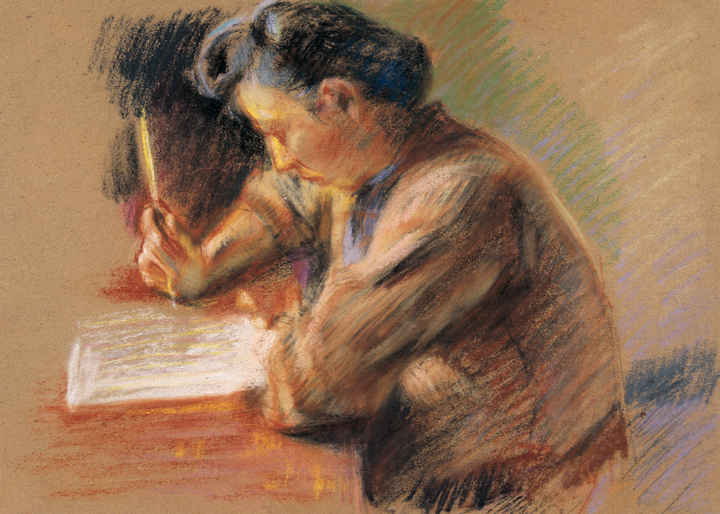
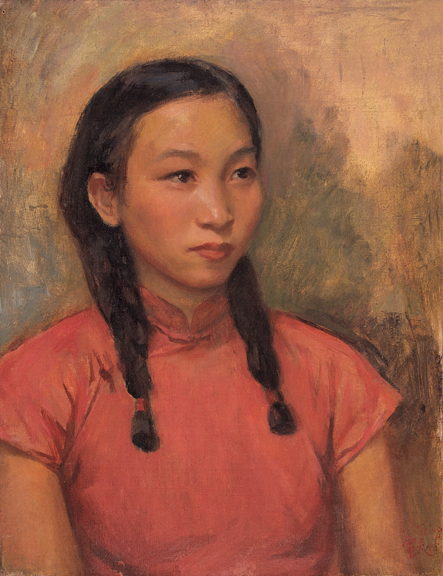
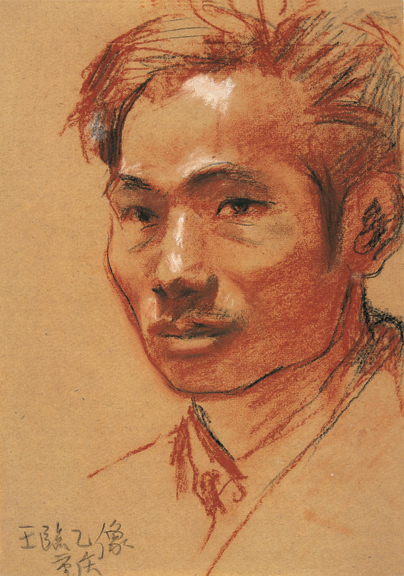
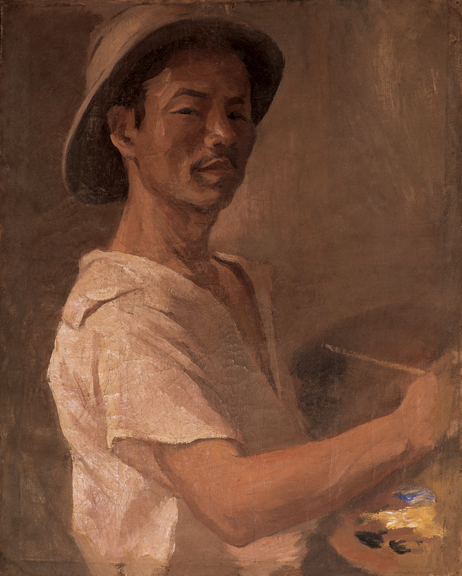
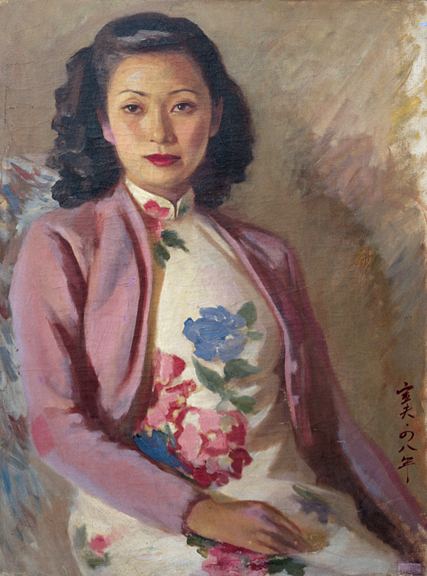
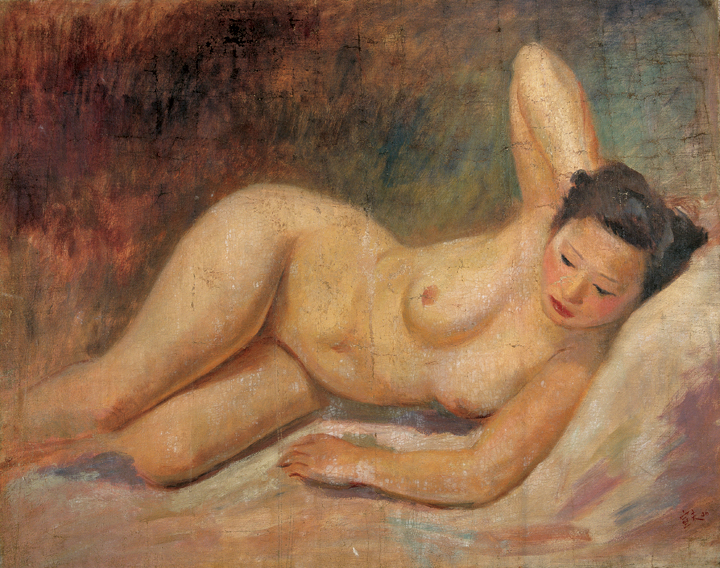
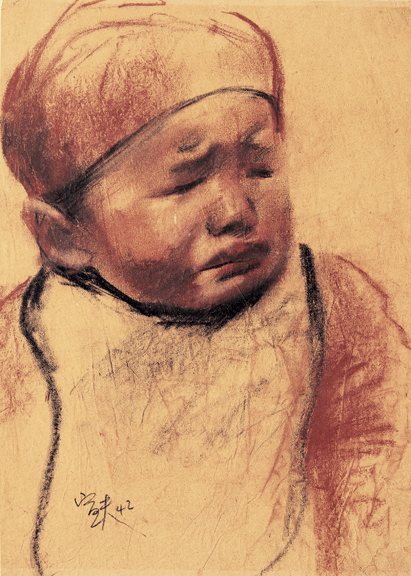
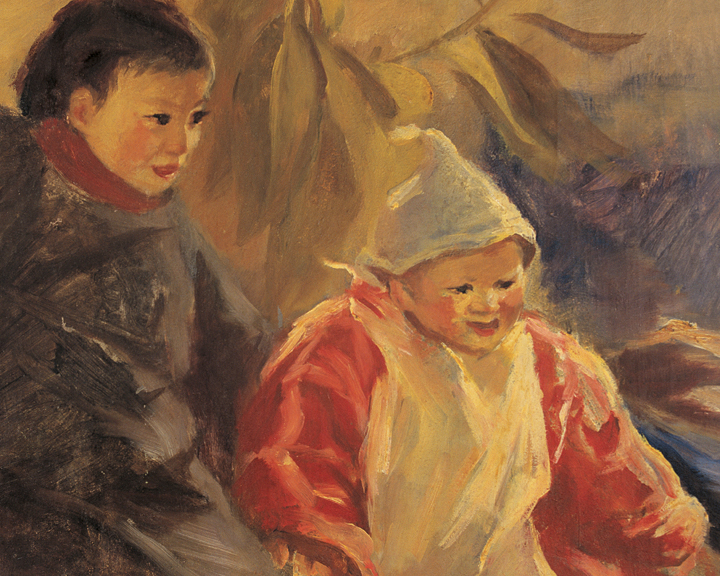
In 1946, Mr. Qin Xuanfu went to Mount E-Mei and Dujiang Dam to practice.
His painting “Entering the E-Mei Mountain” displays rich scenery; green mountains , mountains covered with heavy mist and fog, and an artist, carrying a large heavy painting case on his shoulder walking on the mountain trails. The painting is full of loving emotions and taste.
“Looking the Glacia from Golden EMei Peak” has a different style; the author was in the mountain, appreciating its scenery. He did not spend too many strokes on the details of the mountain, yet emphasized the sky above the peak, the sea of white clouds and the snowy mountains in the distance. . The color in the sky is changing to yellow from blue and vividly displays changeable lighting in the sky.
In his oil painting “Dujiang Dam”, the author used large color blocks as the background, heavy strokes, and strong light and color to depict moving clouds in the sky, as well as the steep mountains on the ground.
The painting “Chain Bridge over the DuJiang Dam” vividly depicted rich and subtle changes in the river, the river bank, and the lights reflected on tree leaves.
(The oil painting “Chain Bridge over the DuJiang Dam”, The oil painting “Scenery of Mount Emei “, The oil painting “Cloud Sea at the Mount Emei”, The oil painting “Dujiang Dam Scenery “)
In December 1946, Mr. Qin left Chongqin to Nanjing with the University of Center Government, where he continued his tenure. And there in the same month, he held an exhibition together with Xu Beihong, Cheng Zhifu, Fu Baoshih, and Lu Sibai.
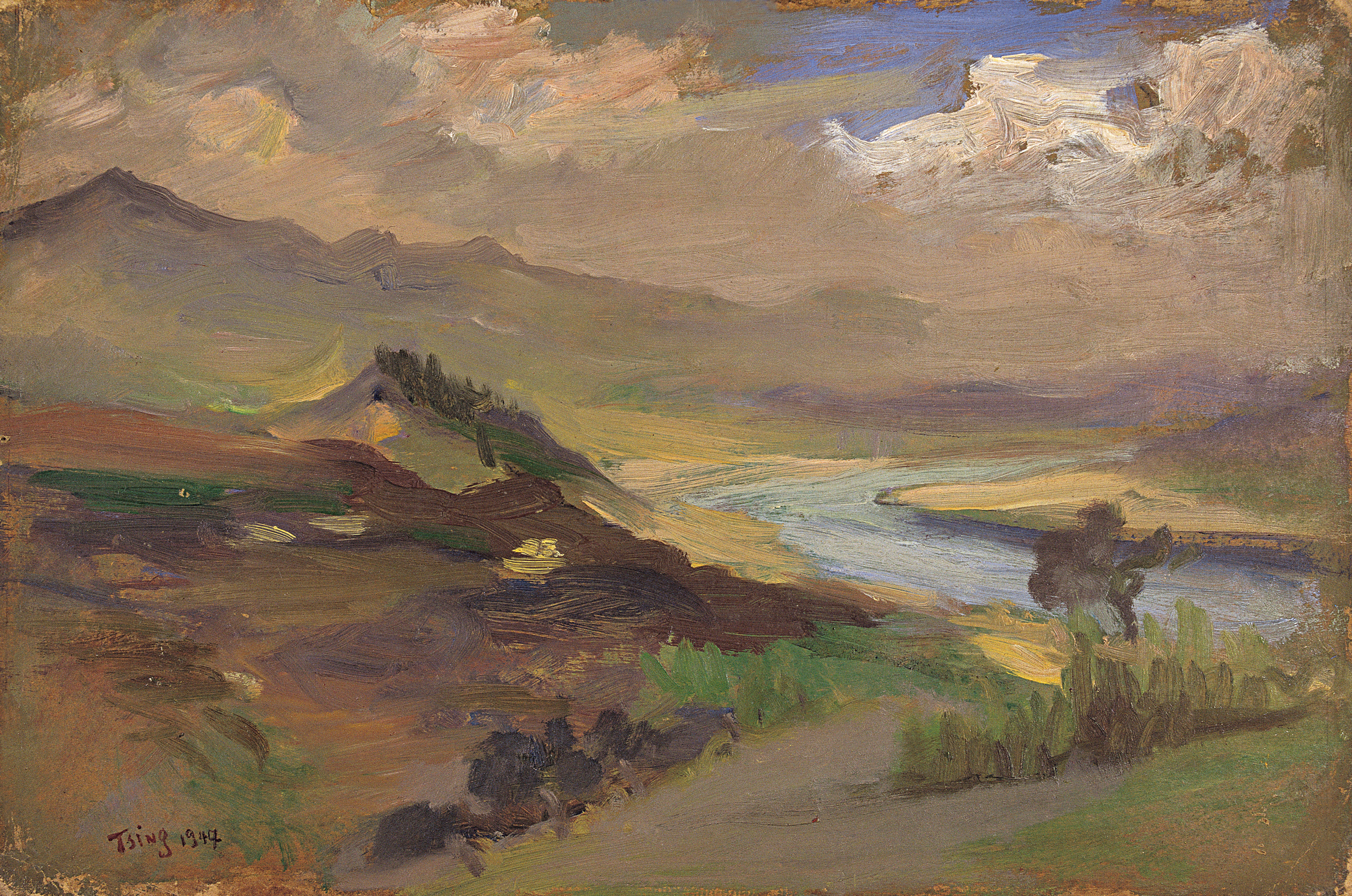

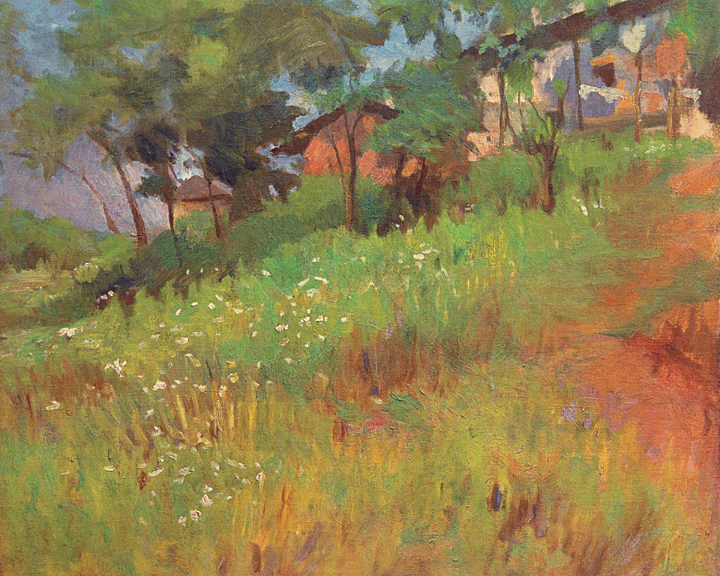
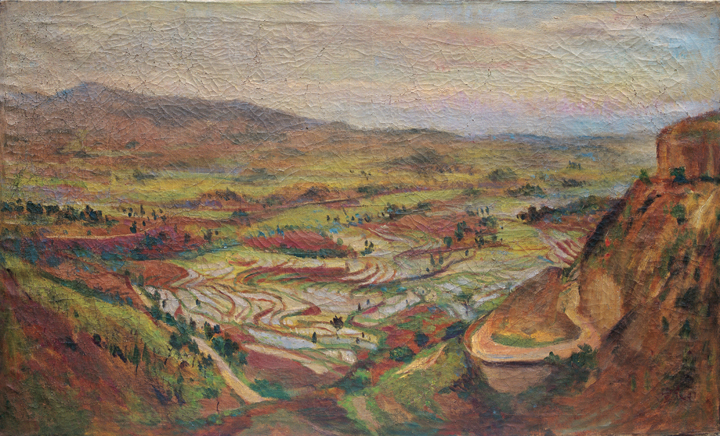
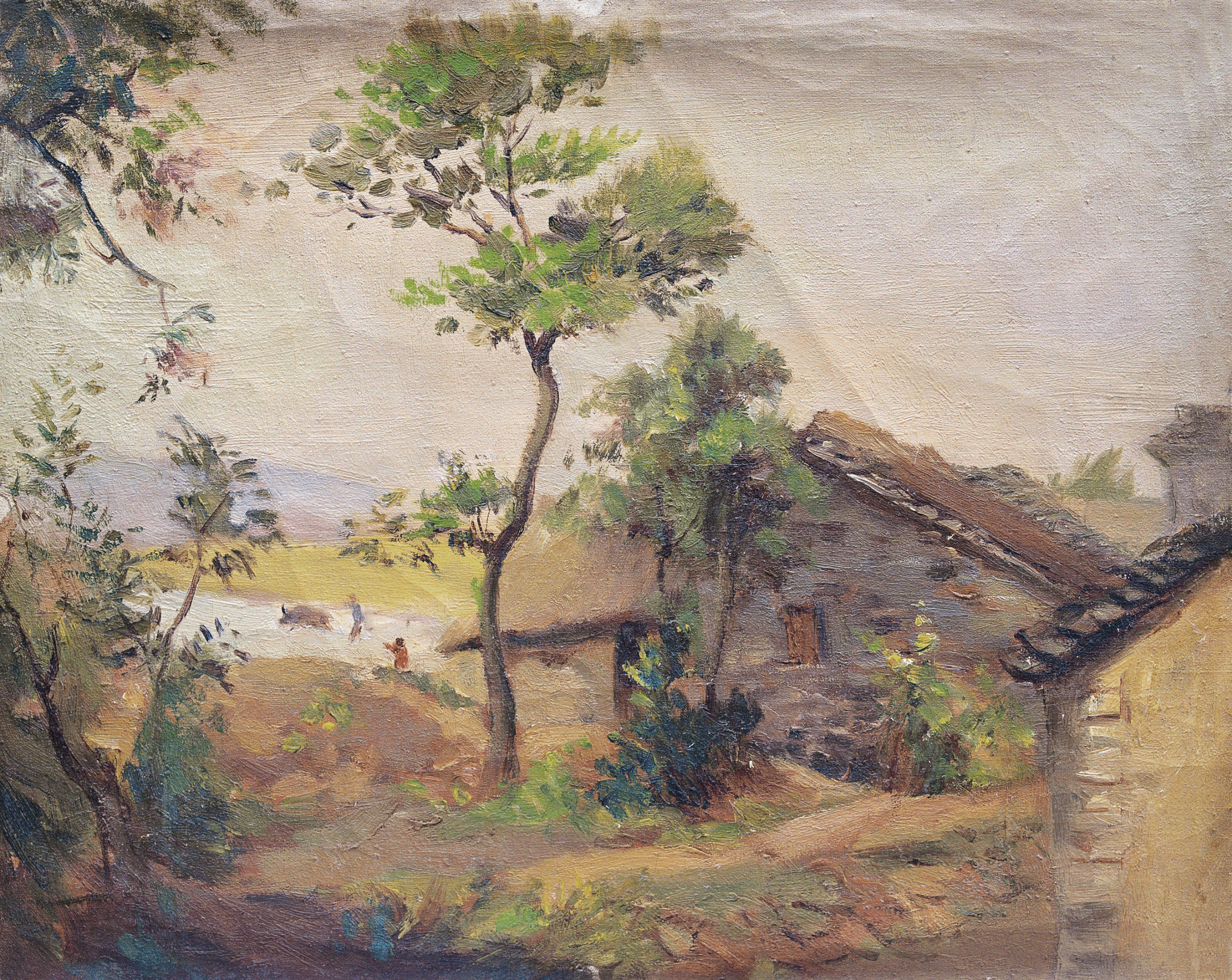
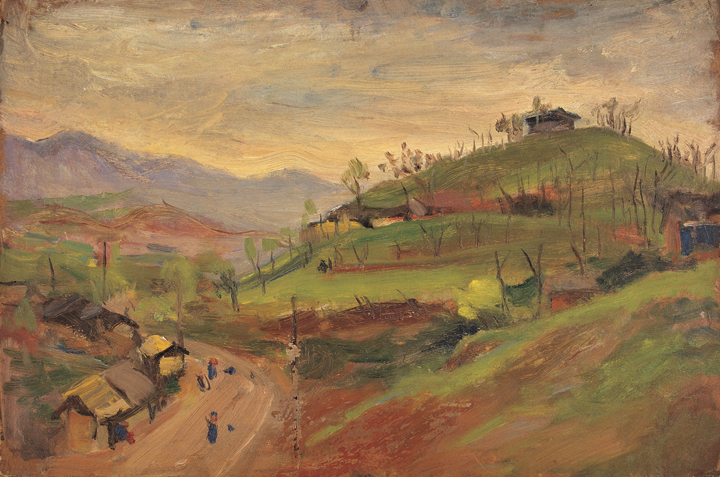
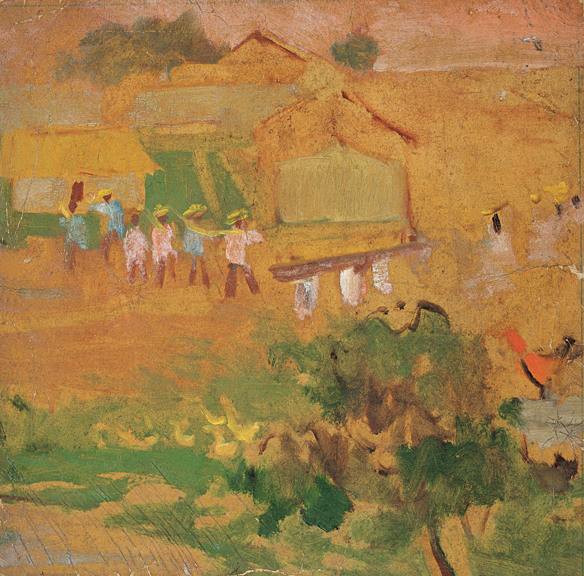
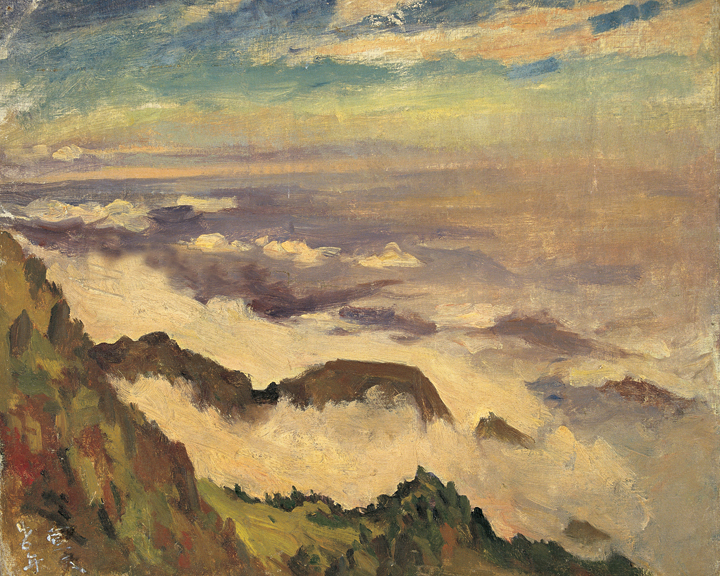
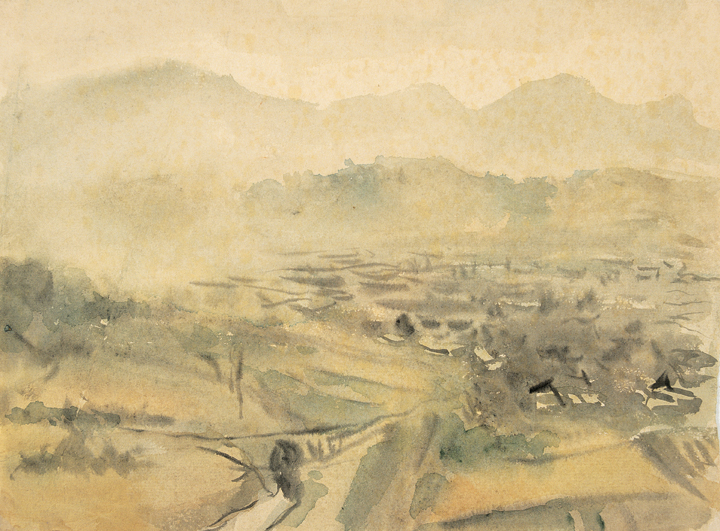
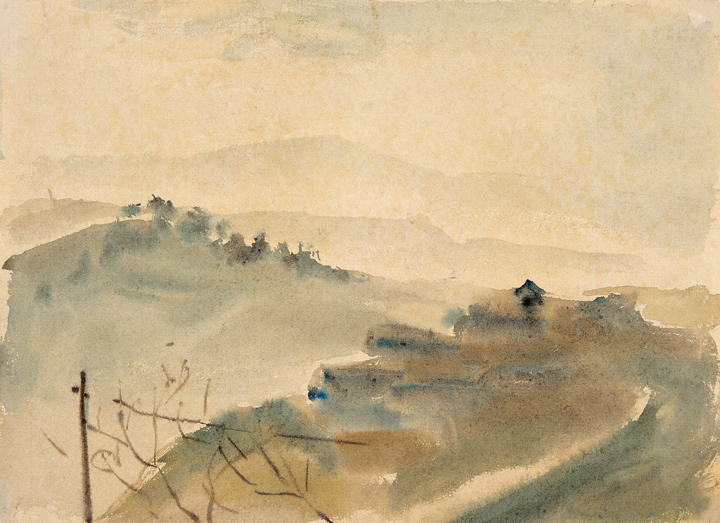
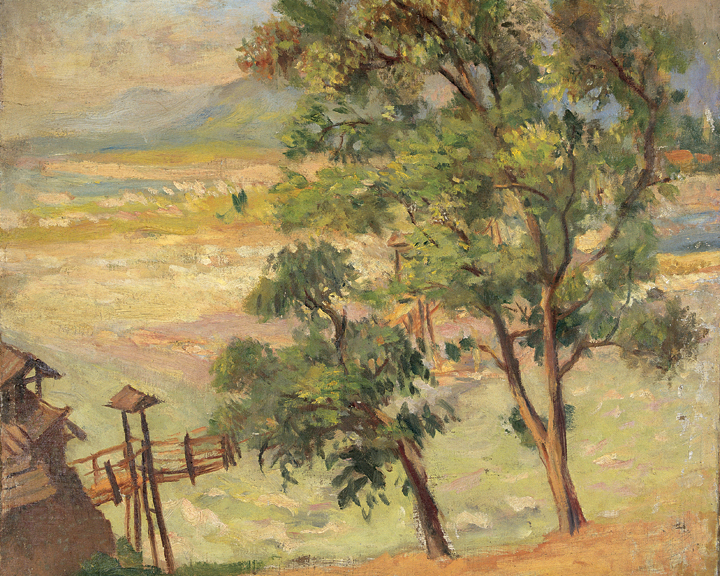
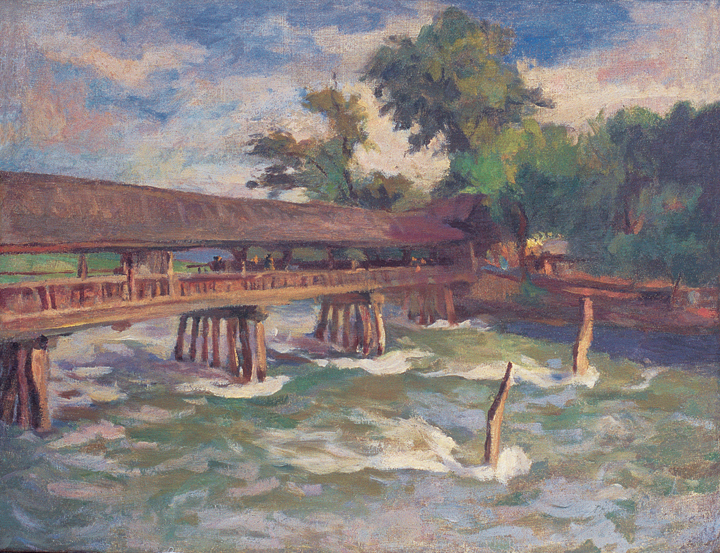
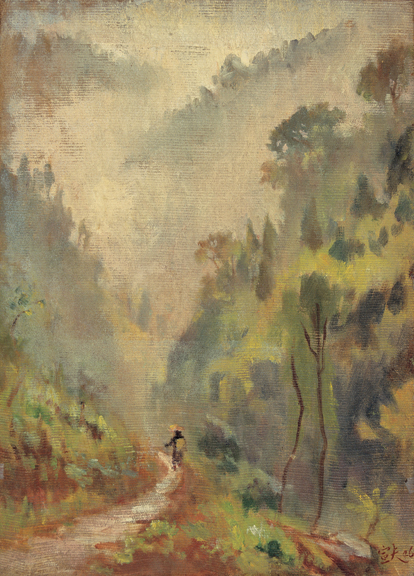
In summary, from 1933 to 1949 concluded the first stage in Mr. Qin Xuanfu’ s art career. It has few characteristics which can be summarized as follows:
1. Mr. Qin Xuanfu had become a mature first class visual artist. His oil painting “Mother Teaching” that gained the Third National Fine Arts Exhibition Award is a milestone. In one of his books, Mr. Wang Rizhang, one of the famous artists in China, pointed out “Xuanfu's paintings are really of the first class, not only in China, but also in the world. His techniques are so perfect.” Mr. Fu Baoshi also said that, “Mr. Xuanfu is full of talent and has his own style; no one could possibly be able to paint such paintings.” Mr. Xu Beihong also praised Mr. Qin’s paintings as “Scholar’s art”.
2. Mr. Qin Xuanfu applied his realistic belief and theory of “embracing life and holding Nature tightly” into his own practice, while successfully integrating western painting skills with Chinese culture and traditions. He made great achievements in this direction and had much impact on arts and on society.
Mr. Qin Xuanfu’s art has his own unique style. In1945, Mr. Lin Fengmian, a master of art pointed out in one of his articles that, “Xuanfu is gifted with combined skills in light and color. In his paintings, there are lovely colors of impressionist giants, but also great lines of neoclassicism. Such attempts have made his paintings very vivid and lively.” Mr. Lu Sibai also commented that “in Xuanfu’s works, he is capable of understanding the essence of the similar styles in West Europe, especially Dutch, Spanish, and French impressionists' styles. He is good at incorporating their styles seamlessly into his own paintings.”


